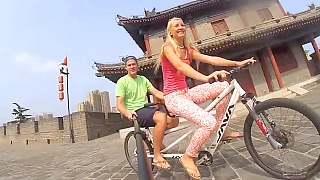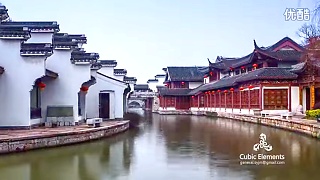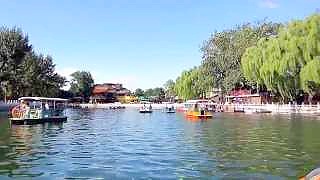
|
With Beijing Old Liu ...
The place often referred to as the "Forbidden City" in Guiyang is QingYan Ancient Town (青岩古镇). QingYan Ancient Town is a well-preserved historical site located in the southern part of Guiyang, the capital of Guizhou Province. The town was originally built in 1378 during the Ming Dynasty and has since retained its ancient architectural charm and cultural heritage. Its nickname, "Forbidden City of Guiyang," stems from its historical significance and its traditional Chinese architecture reminiscent of the famed Forbidden City in Beijing.
QingYan Ancient Town Visitor Guide
Overview
QingYan Ancient Town, located in GuiYang, GuiZhou province, is one of China's most well-preserved historical towns. Founded in 1378 during the Ming Dynasty, this ancient town is renowned for its rich history, cultural heritage, and stunning traditional Chinese architecture. Visitors can explore a myriad of ancient buildings, temples, and stone-paved streets that tell the story of QingYan's storied past.
History
QingYan Ancient Town was established as a military fortress during the Ming Dynasty. Its strategic location and robust defense structures helped it become an important cultural and commercial center over the centuries. The town's architecture reflects its historical significance, with a blend of Han, Miao, and Dong ethnic styles, and well-preserved buildings from the Ming and Qing dynasties.
Main Attractions
Ancient City Wall
The ancient city wall of QingYan is one of its most iconic features. Built with large, sturdy stones, the wall has four gates facing north, south, east, and west, each adorned with intricate carvings and inscriptions. Walking along the wall provides a panoramic view of the town and its surroundings.
WenChang Pavilion
WenChang Pavilion is a beautiful structure dedicated to WenChang, the Taoist god of literature. The pavilion is a popular spot for visitors to appreciate traditional Chinese architecture and enjoy the serene atmosphere.
Temple of the Black Dragon
The Temple of the Black Dragon is a significant religious site in QingYan Ancient Town. This Taoist temple, with its intricate wood carvings and peaceful ambiance, is dedicated to the Black Dragon, a deity believed to protect the town from floods.
Former Residences
QingYan Ancient Town is home to several well-preserved residences of notable historical figures. These include the former residence of Zhou Yiqun, a famous scholar, and the home of Zhao Yijiong, a renowned military commander. These residences offer a glimpse into the lives of QingYan's past residents.
Culture and Traditions
QingYan Ancient Town is a melting pot of different cultures and traditions, with a significant influence from the Han, Miao, and Dong ethnic groups. The town hosts various cultural festivals throughout the year, showcasing traditional music, dance, and crafts. Visitors can also experience local culinary delights, such as QingYan tofu, rice wine, and other traditional GuiZhou dishes.
Activities and Experiences
Walking Tours
One of the best ways to explore QingYan Ancient Town is on foot. Walking tours allow visitors to wander through the narrow, stone-paved streets, discover hidden courtyards, and take in the historical ambiance of the town.
Local Handicrafts
QingYan is famous for its traditional handicrafts, including paper-cutting, embroidery, and silverwork. Visitors can watch local artisans at work and purchase unique souvenirs to take home.
Food Tasting
The town offers a variety of local delicacies that are a must-try for visitors. Sample traditional dishes like QingYan stuffed tofu, rice wine, and various Miao ethnic snacks at local restaurants and street vendors.
Accommodation
QingYan Ancient Town offers a range of accommodation options, from traditional guesthouses to modern hotels. Staying in a local guesthouse provides an authentic experience and a chance to interact with the local community.
Travel Tips
Best Time to Visit: The best time to visit QingYan Ancient Town is during spring (March to May) and autumn (September to November) when the weather is mild and pleasant.
Getting There: QingYan Ancient Town is located about 29 kilometers from GuiYang city center. It is accessible by bus, taxi, or private car. The journey takes approximately 40 minutes.
Opening Hours: The town is open to visitors daily from 8:00 AM to 6:00 PM.
Guided Tours: Consider hiring a local guide to gain deeper insights into the town's history, architecture, and cultural significance.
Respect Local Customs: When visiting religious sites and former residences, be respectful of local customs and traditions. Always ask for permission before taking photos of people.
Pack Accordingly: Wear comfortable walking shoes and bring a light jacket or umbrella, as the weather can change quickly.
|





 A glimpse of China – a 1 minute time-lapse film
A glimpse of China – a 1 minute time-lapse film







![A great film of the Great Wall north of Beijing, including `wild wall`, accompanied by great music (踏古 (Ta Gu) by Lin Hai, `Walking into Ancientry`, with Chinese lute (pipa)). We [mum, dad - videographer - and son and daughter, from Singapore] hiked 3 sections of the Great Wall in winter, without any guides after studying blogs and posts by fellow hikers. All these sections are different. From the unrestored GuBeiKou Great Wall where we were the only people around, to the wonderful JinShanLing, where the climb is steep and every direction gives you good photo opportunities, to the restored MuTianYu where we hiked in heavy snowfall. We stayed at local farmhouses on both nights, dined with the locals and hitched rides to nearby bath-houses. Temperature ranged from -5 deg C (day) to -12 deg C (night). Winter daybreak is at 7am and the sky becomes dark by 5pm so one has only 10 hours of daylight, so plan your travelling and hiking schedules carefully. This once-in-a-lifetime experience was captured on video and we would like to share it with you. The feelings just can`t be described - you need to experience it first hand. Take only memories, leave only footprints and kindness . . . A wonderful animation combining traditional Chinese painting and dance - don`t miss it ! 踏古-林海 作曲:林海 视频作者:中国传媒大学动画学院 Hiking the Great Wall 长城 of China in the snow](https://www.beijingbuzzz.com/b183.jpg)










